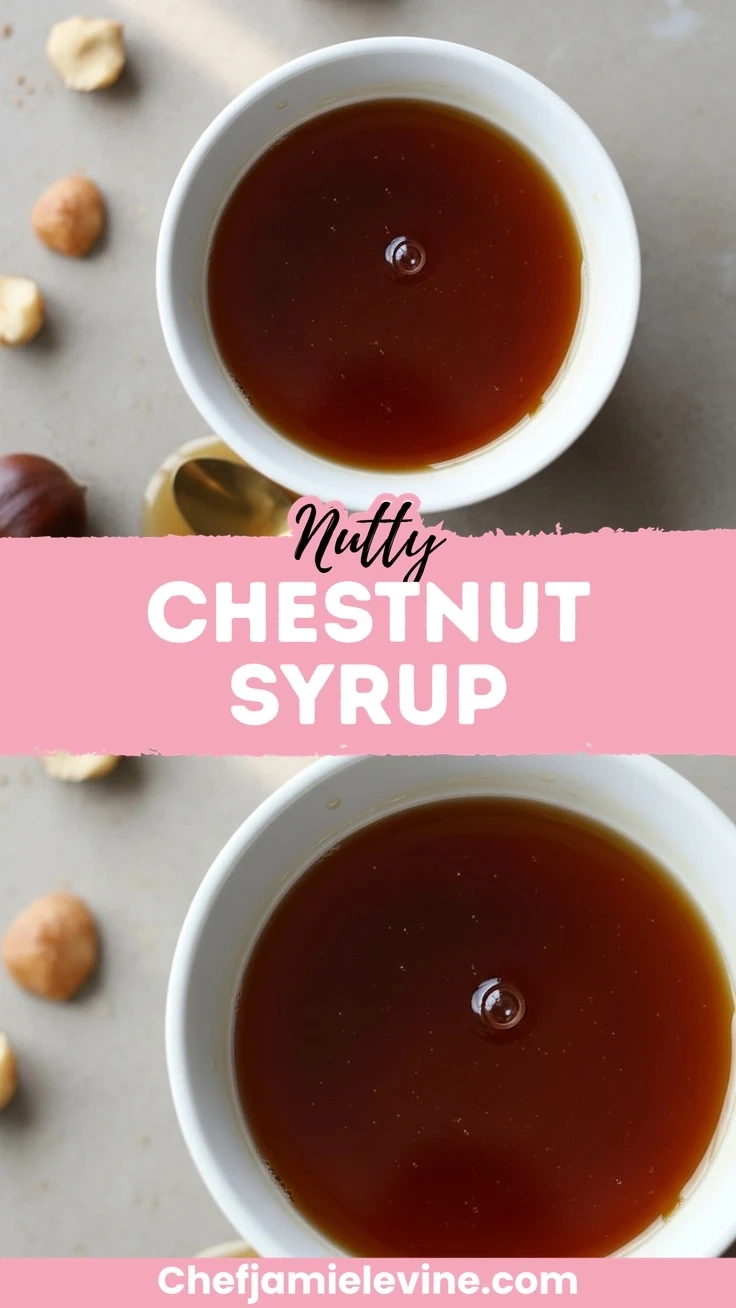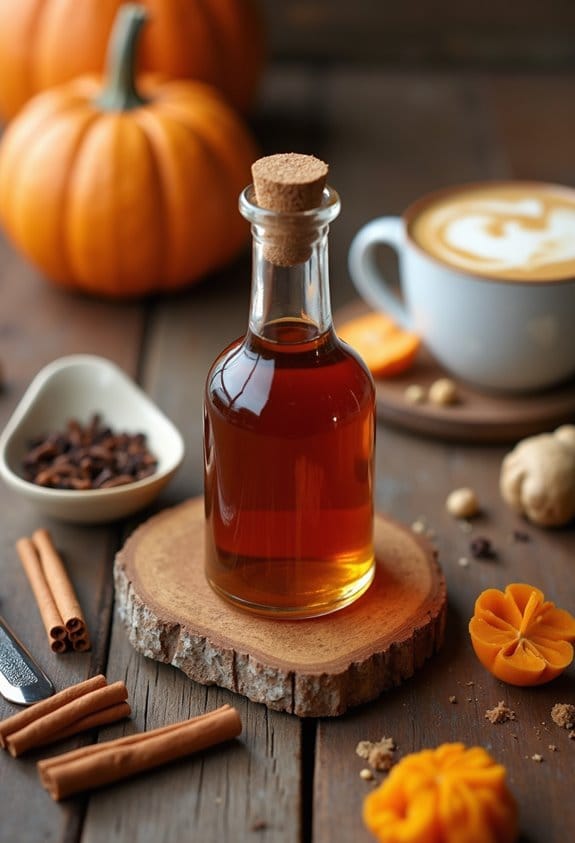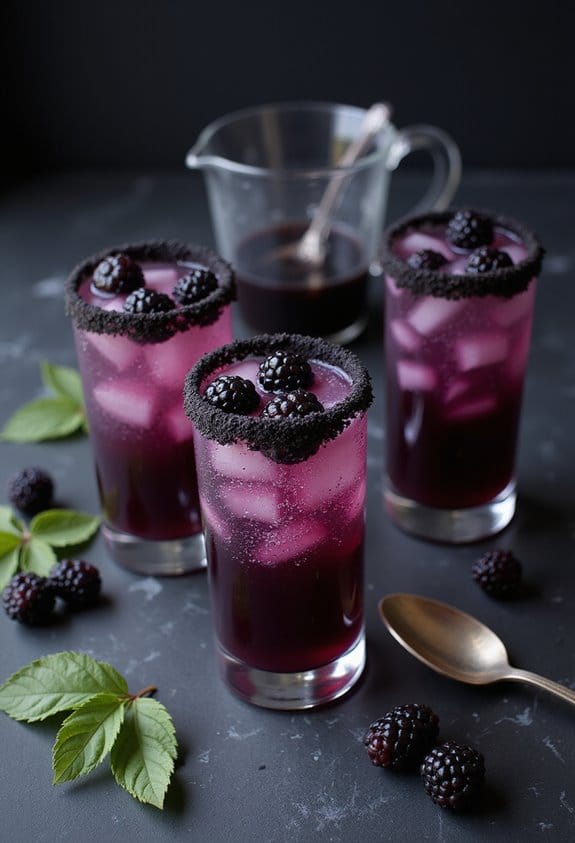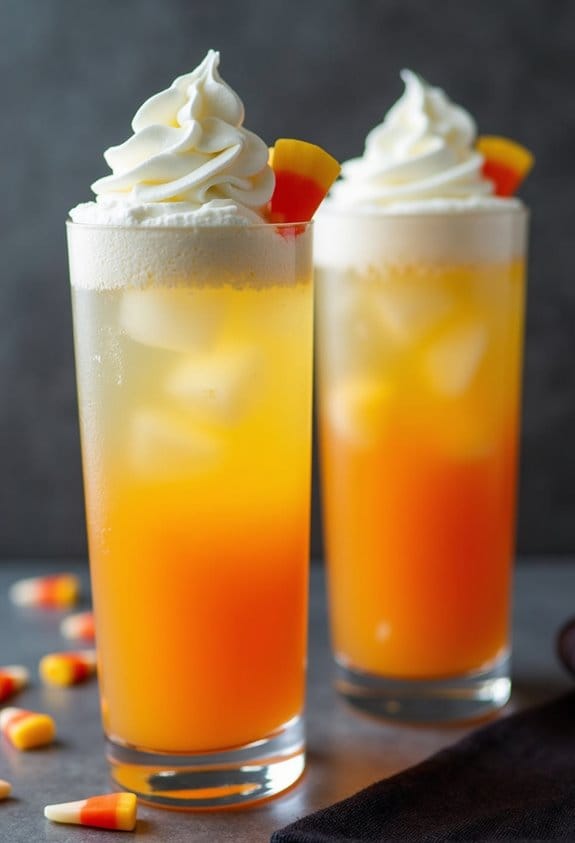Why You’ll Love this Chestnut Syrup
If you’ve never experienced the subtle, earthy sweetness of chestnuts in syrup form, you’re in for a genuine treat. This homemade syrup captures all the warm, nutty goodness of roasted chestnuts in a versatile liquid that transforms ordinary drinks into something special.
I love how this syrup bridges seasons—cozy enough for winter mornings but elegant enough for holiday entertaining.
It’s incredibly adaptable too, working magic in both hot and cold beverages or drizzled over desserts. The best part? It’s surprisingly simple to make, requiring just a handful of ingredients and about 15 minutes of active time.
What Ingredients are in Chestnut Syrup?
The beauty of homemade chestnut syrup lies in its simplicity. With just a handful of ingredients, you’ll capture that distinctive nutty essence that makes chestnuts so special.
I’m always amazed at how these few components transform into something so flavorful—and you probably already have most of them in your pantry right now.
- 1 cup water
- 1 cup granulated sugar
- ½ cup roasted chestnuts, finely chopped (jarred or vacuum-packed varieties work perfectly)
- ½ teaspoon vanilla extract
- Optional: tiny pinch of fine salt
- Optional: ¼ teaspoon cinnamon
- Optional: 1-2 teaspoons dark rum (or ⅛ teaspoon rum extract)
- Optional: 1 teaspoon lemon juice or 1 tablespoon light corn syrup (to prevent crystallization)
The quality of your chestnuts really matters here. Pre-roasted, jarred chestnuts save tons of time and deliver consistent results, but if you’re feeling ambitious, you could certainly roast your own.
Just make sure to chop them very finely—almost to a coarse powder—to release maximum flavor during simmering. And don’t skip the vanilla; it rounds out the nutty flavor perfectly.
The optional ingredients? They’re like little flavor enhancers that can take your syrup in different directions depending on how you plan to use it.
How to Make this Chestnut Syrup

Making this chestnut syrup couldn’t be more straightforward—it’s all about gentle simmering to coax out that beautiful nutty flavor. Start by combining 1 cup water, 1 cup granulated sugar, and ½ cup finely chopped roasted chestnuts in a small saucepan. The key word here is “finely”—you want those chestnuts chopped almost to a coarse powder to release maximum flavor.
Bring this mixture to a gentle simmer over medium heat, then reduce to maintain that soft bubble for about 12 minutes, stirring occasionally. You’ll notice the mixture becoming slightly thicker and, more importantly, filling your kitchen with the most incredible roasted chestnut aroma.
Once your syrup has simmered for the full 12 minutes, remove it from the heat and prepare for straining—this step is essential for that silky-smooth texture. Pour the hot mixture through a fine-mesh sieve into a heat-safe bowl or measuring cup, using the back of a spoon to press firmly on those solids to extract every last drop of flavor.
Now stir in ½ teaspoon vanilla extract, along with any optional boosts you might fancy—perhaps a tiny pinch of salt for depth, ¼ teaspoon cinnamon for warmth, or even 1-2 teaspoons of dark rum for a little grown-up kick.
Want to prevent crystallization as your syrup sits? Consider adding 1 teaspoon lemon juice or 1 tablespoon light corn syrup at the beginning with your sugar—this little trick helps keep your syrup glossy and pourable for weeks.
Let your finished syrup cool completely before transferring it to a clean bottle or jar. You’ll notice it thickens slightly as it cools, reaching that perfect drizzling consistency.
If you’re particularly fussy about texture (aren’t we all sometimes?), you could strain the syrup a second time through cheesecloth for ultra-smoothness. The finished syrup keeps beautifully in the refrigerator, ready to transform your morning coffee into something truly special.
And can I just say—the smell of this simmering on the stove might be worth making it even if you never used a drop? Pure holiday magic in a bottle, if you ask me.
Chestnut Syrup Substitutions and Variations
Looking for ways to customize this chestnut syrup recipe?
I’ve played around with several delicious variations that might spark your creativity.
Try replacing a quarter cup of sugar with pure maple syrup (add it after simmering) for a woodsy, complex flavor that’s divine in coffee.
For serious chestnut lovers, stir in half a teaspoon of chestnut paste (crème de marrons) off heat.
It adds this incredible richness that makes the syrup cling beautifully to whatever you’re drizzling it on.
These tweaks transform an already lovely syrup into something truly special, perfect for gifting—just bottle, label, and include simple instructions.
What to Serve with Chestnut Syrup
Now that you’ve crafted your perfect syrup, let’s explore all the delightful ways to use it.
My absolute favorite is swirling it into a morning latte – just 1-2 tablespoons with espresso and steamed milk, topped with a light dusting of cinnamon. Divine.
It transforms ordinary hot chocolate into something special, and dissolves beautifully in iced coffee too.
Feeling fancy? Try making an Italian soda with sparkling water, or go decadent by drizzling over ice cream or pancakes.
I’ve even brushed it on roasted sweet potatoes, which might sound odd but creates this gorgeous caramelized finish.
Final Thoughts
While chestnut syrup isn’t exactly mainstream in American kitchens, I’ve found it’s one of those secret weapons that makes people wonder what your culinary trick is.
The deep, nutty warmth transforms ordinary drinks into something memorable, especially during those chilly months when we crave comfort.
What I love most about this syrup is its versatility. One batch carries you from morning lattes to cocktail hour, with plenty left for drizzling over desserts.
It’s worth the minimal effort, trust me. And isn’t there something delightfully old-world about cooking with chestnuts? Like connecting to culinary traditions that predate our hurried modern shortcuts.

Homemade Chestnut Syrup
Ingredients
Equipment
Method
- Combine water, granulated sugar, and finely chopped roasted chestnuts in a small saucepan.
- Bring the mixture to a gentle simmer over medium heat, then reduce to maintain a soft bubble for about 12 minutes, stirring occasionally.
- Remove from heat and strain the hot mixture through a fine-mesh sieve into a heat-safe bowl, pressing firmly on the solids with the back of a spoon to extract maximum flavor.
- Stir in the vanilla extract and any optional ingredients you desire (salt, cinnamon, rum, or lemon juice).
- Allow the syrup to cool completely before transferring to a clean bottle or jar.
- For an ultra-smooth texture, you can strain the syrup a second time through cheesecloth.



